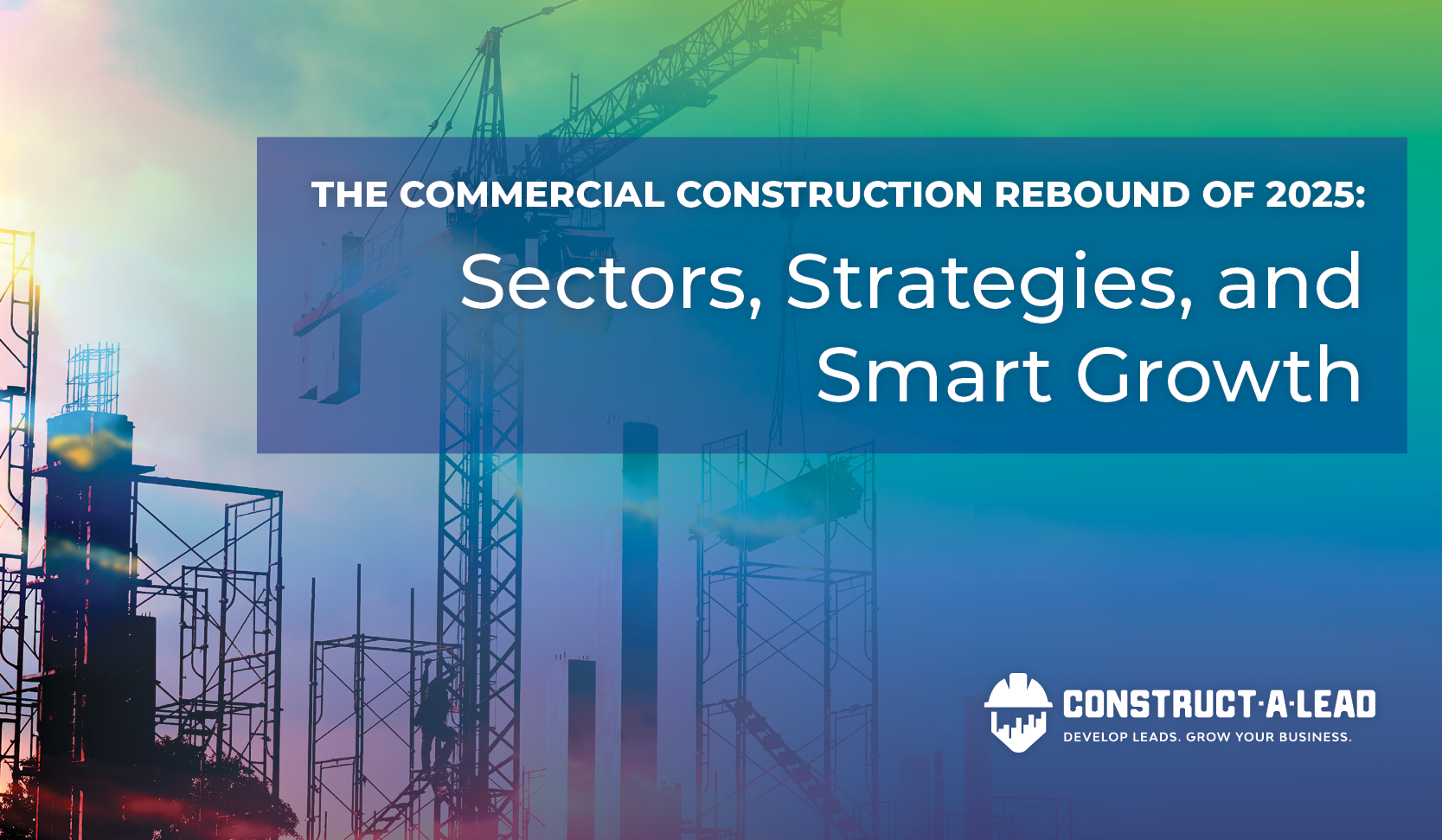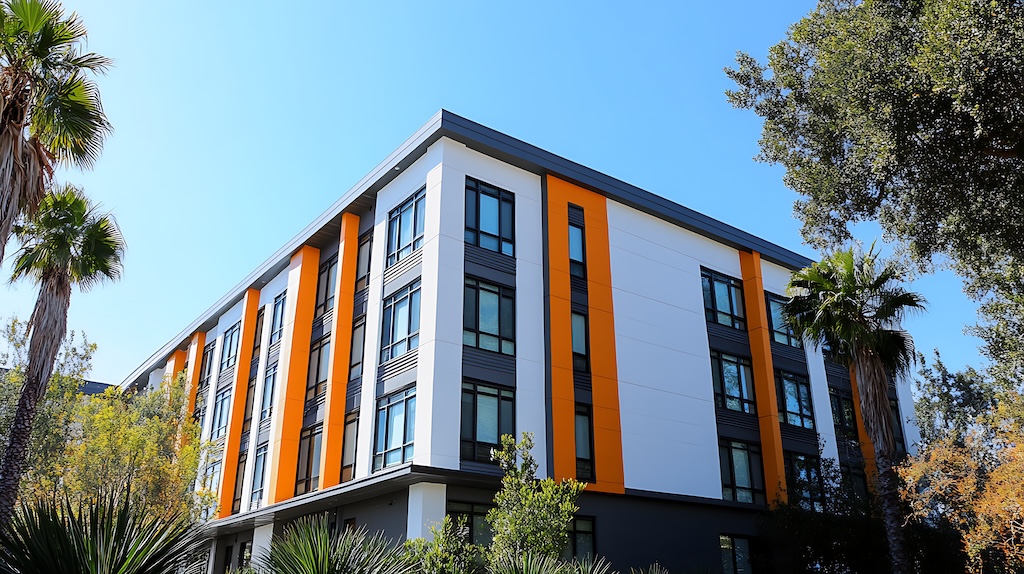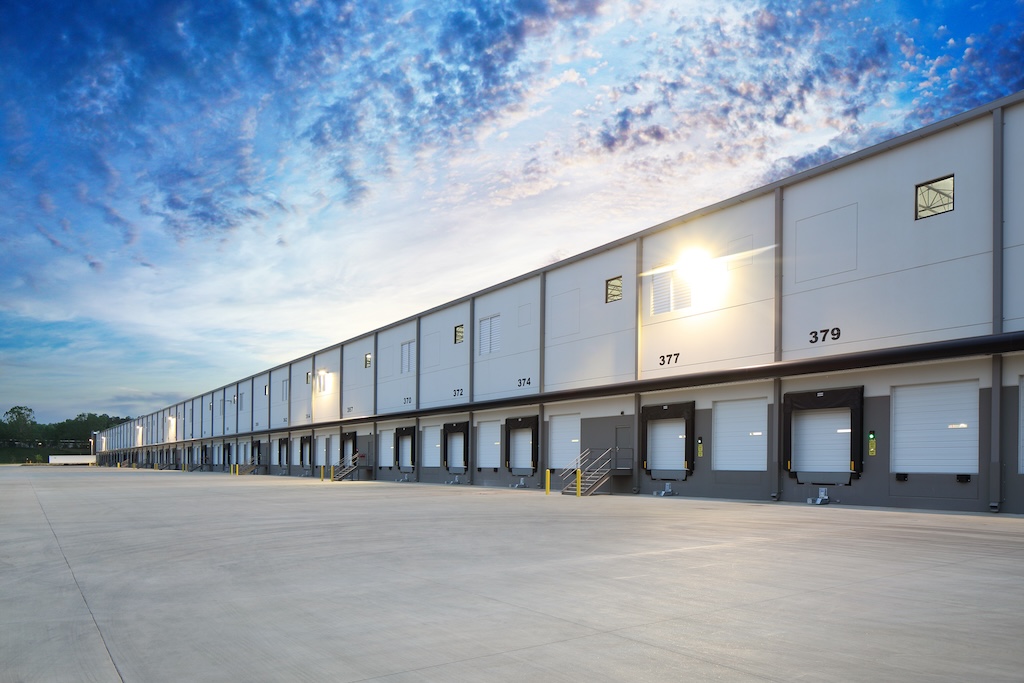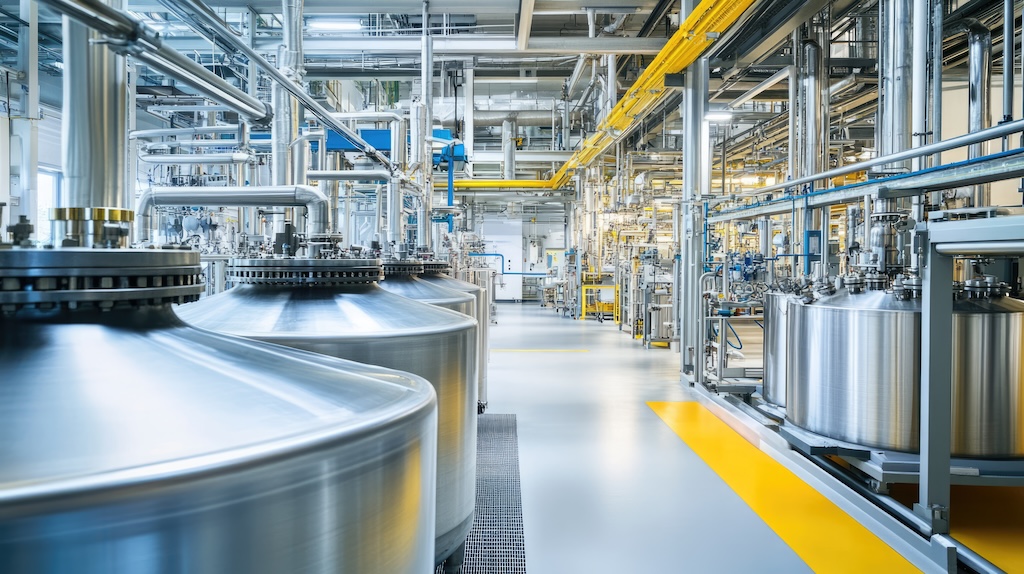
2025: A Year of Transformation
2025 is shaping up to be a landmark year for commercial construction. After years of uncertainty and shifting demand, the industry is experiencing a robust rebound, with total spending projected to rise by 8.5%. But this isn’t just a story of more cranes on the skyline—it’s about how the very nature of what we build, and how we win work, is changing.
Three sectors are at the heart of this transformation:
- Office-to-Residential Conversions: Cities are reimagining their downtowns, turning underused office towers into vibrant housing.
- Modern Warehouse Construction: The e-commerce boom is fueling demand for high-tech, automation-ready distribution centers.
- Life Science Facilities: Biotech and research are driving a surge in specialized, compliance-ready lab spaces.
For general contractors and subcontractors, these trends bring both new challenges and unprecedented opportunities. The firms that are thriving aren’t just building—they’re rethinking how they find, qualify, and win projects. They’re blending industry expertise with digital marketing, data-driven outreach, and early engagement to connect with the right leads before the competition.
In this article, we’ll explore:
- Why these three sectors are rebounding so strongly in 2025
- The unique challenges and opportunities each presents
- How leading firms are using technology and marketing to get ahead
- Actionable strategies to help you capture more high-value projects this year
Office-to-Residential Conversions: Turning Vacancy into Vibrancy

The Opportunity
With hybrid work now the norm, cities across the U.S. are facing a glut of underused office space. Rather than let these buildings sit idle, municipalities are offering powerful incentives—tax breaks, zoning relief, and density bonuses—to encourage their transformation into multifamily housing. This trend is more than a quick fix; it’s a strategic response to housing shortages, high land costs, and the need for sustainable urban growth.
Why Now?
- Hybrid work and remote trends have left many office buildings underutilized in major cities.
- Cities are offering new incentives (tax breaks, zoning relief, density bonuses) to accelerate conversions and address housing shortages.
- Adaptive reuse is faster, less disruptive, and more sustainable than ground-up development.
- Early movers are capturing both financial incentives and first-mover advantage in competitive urban markets.
What Makes These Projects Unique
- Regulatory Complexity:
Navigating zoning changes, building codes, and historic preservation requirements can be challenging. Cities like Boston, Philadelphia, and Denver are streamlining approvals and offering grants to accelerate conversions. - Design & Engineering:
Converting an office to residential use isn’t just about knocking down walls. It requires creative design to maximize light, airflow, and livability, as well as upgrades to plumbing, HVAC, and accessibility. - Community Impact:
These projects can revitalize neighborhoods, strengthen local identity, and support urban density goals.
How Contractors Are Winning Early
The most successful firms are getting involved before projects hit public bid boards. Here’s how they’re doing it:
- Early Intelligence:
- Monitor brokerage networks, zoning board agendas, and redevelopment filings for early signals.
- Use digital platforms and AI-driven alerts to spot opportunities 3–6 months before public bidding.
- Relationship Building:
- Engage with developers, property owners, and municipal stakeholders early in the process.
- Position your firm as a partner, not just a bidder.
- Strategic Marketing:
- Invest in targeted SEO, Google Ads, and email campaigns aimed at property owners and developers.
- Showcase detailed project portfolios and case studies to build credibility.
- Leverage local search visibility to stand out in your market.
Real-World Examples:
Calgary’s Fast-Tracked Conversion Success
One standout example comes from Calgary, Alberta, where the city launched its “Downtown Development Incentive Program,” offering up to $75 per square foot to encourage office-to-residential conversions. By engaging with city planners even before the official rollout, a proactive developer was able to fast-track approvals and secure funding for a 15-story office tower transformation. The result? Over 200 new residential units added to the downtown core—delivered ahead of competitors who waited for the public announcement. Early engagement and a keen eye for incentives made all the difference, setting the pace for Calgary’s urban revitalization.
Regulatory Hurdles: D.C.’s Historic Win
In Washington, D.C., a local firm faced the daunting task of converting a 1920s office building in the Golden Triangle BID into luxury apartments. Rather than simply bidding, the company invested in pre-development, working hand-in-hand with the Historic Preservation Office and neighborhood associations. Their proposal balanced preservation of the building’s historic façade with modern, livable interiors—winning over both regulators and the community. This collaborative, relationship-driven approach helped them navigate complex zoning and secure the project, proving that persistence and partnership can turn regulatory headaches into headline-grabbing success.
The Bottom Line
Office-to-residential conversions are one of 2025’s fastest-growing opportunities. Contractors who combine early project intelligence, relationship-building, and digital marketing are best positioned to capture high-value contracts and help shape the future of urban living.
Warehouse Construction: The E-Commerce Engine

Why Warehouses Are Thriving
The warehouse sector is experiencing explosive growth in 2025, driven by the relentless rise of e-commerce. With online sales projected to account for 26% of all U.S. retail by year’s end, companies are racing to build and upgrade distribution centers that can handle rapid fulfillment, automation, and last-mile delivery.
Why Now?
- E-commerce is at an all-time high, now accounting for over a quarter of U.S. retail sales.
- Retailers and logistics companies need modern, automation-ready distribution centers to meet rapid delivery expectations.
- Advances in robotics and AI are transforming warehouse design, demanding new construction expertise.
- Suburban land availability and infrastructure investments have created a window for fast-tracked development.
Key drivers:
- E-commerce boom: Online shopping is now a default for many consumers, requiring more—and smarter—warehouse space.
- Strategic locations: Developers are targeting suburban areas with affordable land and easy highway access to speed up delivery times.
- Automation & technology: Modern warehouses are designed for robotics, AI-driven inventory management, and cold chain logistics.
What Sets 2025 Warehouses Apart
- Automation-Ready Design:
Warehouses are no longer just storage spaces. They’re high-tech hubs with advanced conveyor systems, robotics, and real-time data dashboards. - Specialized Construction:
Projects often require modular construction, cold storage capabilities, and specialized subcontractors with expertise in automation and logistics. - Speed & Scalability:
The pace of e-commerce means projects must be completed quickly and be easily scalable for future growth.
Example:
A logistics company in the Midwest partnered with a contractor who used cloud-based estimating tools and AI-powered project management. This allowed them to deliver a 500,000-square-foot fulfillment center ahead of schedule, with built-in flexibility for future automation upgrades.
How Contractors Are Winning in Warehouse Construction
- Early Lead Identification:
- Use digital platforms to track early-stage permitting and redevelopment filings.
- Leverage AI-driven alerts to spot projects before they go public.
- Data-Driven Marketing:
- Invest in SEO and targeted online ads focused on logistics and retail sectors.
- Optimize landing pages and digital portfolios to showcase expertise in automation-ready builds.
- CRM & Lead Management:
- Integrate lead-tracking software and client databases to nurture relationships from the earliest stages.
- Segment leads by project type, location, and timeline for more effective outreach.
Results:
Firms that combine these strategies are seeing up to 30% more qualified leads and higher win rates on high-value contracts. In a sector where speed and credibility are everything, being proactive and tech-savvy is the new baseline.
Real-World Examples:
Real-World Example: Automation and Speed in Dallas-Fort Worth
A recent project in Dallas-Fort Worth illustrates how embracing automation and speed can set a contractor apart in the warehouse sector. Tasked with building a 300,000-square-foot “dark warehouse” designed primarily for robotic operations, a specialized contractor leveraged real-time project management software to coordinate complex MEP and IT installations. Their ability to integrate advanced robotics and high-density storage systems from the outset enabled them to deliver the facility weeks ahead of schedule—an outcome that was critical for the e-commerce client’s peak season readiness. This case demonstrates that technical expertise and digital coordination aren’t just buzzwords—they’re the new baseline for winning and delivering modern warehouse projects.
Case Study: Data-Driven Site Selection and Efficiency
On a national scale, logistics developers are embracing AI-powered geospatial analytics to optimize last-mile delivery networks. One such developer partnered with a construction firm recognized for its proficiency in sustainable and energy-efficient design. By using data-driven site selection and rapid, sustainable construction practices, the team delivered a future-proof fulfillment center that significantly reduced operational costs for the client. This approach highlights how data and sustainability can be a winning combination in today’s competitive warehouse construction market.
The Takeaway
Warehouse construction is one of the most resilient and dynamic sectors in 2025. Contractors who embrace technology, act early, and market their expertise are not just keeping up—they’re setting the pace for the industry.
Life Science Construction: Innovation’s New Frontier

Why Life Science Facilities Are Booming
The life sciences sector is experiencing a historic surge in 2025, fueled by record biotech funding, rapid R&D expansion, and a global focus on health innovation. This growth is translating into unprecedented demand for specialized lab and research space—making life science construction one of the most attractive and technically demanding opportunities in commercial building.
Why Now?
- Biotech funding and R&D activity have surged, driving record demand for specialized lab and manufacturing space.
- New therapies and diagnostics require compliance-ready, high-spec facilities — often on tight timelines.
- Talent wars in biotech hubs mean flexible, future-ready labs are a must for recruitment and retention.
- Federal, academic, and private investment are fueling long-term, well-funded project pipelines.
Key drivers:
- Biotech investment: Venture funding and public grants are at all-time highs, supporting new research and manufacturing facilities.
- R&D expansion: Companies are racing to develop new therapies, diagnostics, and technologies, requiring state-of-the-art lab environments.
- Talent wars: Top markets are building flexible, tech-enabled spaces to attract and retain scientific talent.
What Makes Life Science Construction Unique
- Technical Complexity:
These projects require cleanroom-grade HVAC, redundant power, biosafety-rated labs, and advanced MEP (mechanical, electrical, plumbing) systems. Fit-out costs are up 20–25% over pre-pandemic levels, with specialized systems accounting for up to 40% of total cost. - Regulatory Demands:
Facilities must meet strict standards for safety, compliance, and uptime—often running 24/7 with zero tolerance for system failures. - Design Flexibility:
Many new builds are “build-to-suit,” tailored for specific tenants and designed to support multiple research teams, modular lab configurations, and evolving biosafety protocols.
Example:
A logistics company in the Midwest partnered with a contractor who used cloud-based estimating tools and AI-powered project management. This allowed them to deliver a 500,000-square-foot fulfillment center ahead of schedule, with built-in flexibility for future automation upgrades.
How Contractors Are Winning in Life Science Construction
- Early Opportunity Tracking:
- Monitor university spin-offs, biotech funding rounds, and R&D expansions for early signals.
- Build relationships with academic partners, venture funds, and research organizations.
- Technical & Compliance Expertise:
- Highlight experience with GMP (Good Manufacturing Practice) and GLP (Good Laboratory Practice) standards.
- Showcase case studies of successful, compliant lab builds.
- AI-Powered Lead Generation:
- Use AI tools to score, segment, and prioritize leads based on funding, project scope, and timeline.
- Personalize outreach to decision-makers in biotech and research.
Emerging Niches to Watch:
- Gene therapy labs: Require advanced automation and biosafety.
- Biomanufacturing campuses: Supported by federal and private funding, often in secondary markets like Houston and Raleigh-Durham.
- Clinical logistics hubs: Demand for cold chain and high-security environments.
Real-World Examples:
Real-World Example: Specialized Expertise & Compliance in Raleigh-Durham
In the fast-growing Raleigh-Durham biotech cluster, a construction firm recently secured a contract for a new gene therapy manufacturing plant by demonstrating a deep understanding of GMP (Good Manufacturing Practice) regulations and a proven record of building BSL-2 and BSL-3 labs. By bringing in compliance consultants early, the team ensured every aspect—from airlocks to redundant HVAC systems—met stringent standards. This not only mitigated risk for the client but also showcased the firm’s technical precision, ultimately giving them the winning edge for one of the region’s most complex life science projects.
Case Study: Attracting Talent and Flexibility in San Diego’s Torrey Pines Mesa
A developer in San Diego’s renowned Torrey Pines Mesa recently commissioned a new multi-tenant lab building, selecting a contractor celebrated for their ability to deliver “future-ready” spaces. The project featured modular lab configurations, collaborative common areas, and advanced digital infrastructure, allowing the space to adapt to a diverse array of research needs. Thanks to the contractor’s emphasis on flexibility and amenities, the developer quickly attracted several high-profile biotech tenants, proving that thoughtful construction is a powerful magnet for top scientific talent in today’s competitive life sciences market.
The Takeaway
Life science construction is not just about building space—it’s about enabling innovation. Contractors who combine technical mastery, regulatory know-how, and early, targeted outreach are winning the most complex and rewarding projects in this fast-growing sector.
Challenges and Opportunities in 2025’s Rebounding Sectors
The Hurdles Contractors Face
While the commercial construction rebound is real, it’s not without its obstacles. Firms in office-to-residential, warehouse, and life science sectors are navigating a landscape that’s as competitive as it is promising. Here’s what’s at stake:
- Labor Shortages:
The industry needs an estimated 439,000 new workers this year just to keep pace with demand. Mega-projects in high-growth regions are straining the available pool of skilled subcontractors and trades. - Permitting and Regulatory Bottlenecks:
Even as cities streamline some processes, complex zoning, historic preservation, and compliance requirements can slow projects—especially in adaptive reuse and life science builds. - Tight Timelines and Rising Costs:
Clients expect faster delivery, but supply chain volatility and inflation are pushing up material and labor costs, making accurate bidding and project management more critical than ever.
Market Saturation:
As more firms chase the same high-value projects, standing out and connecting with the right decision-makers early is essential.
How Leading Firms Are Turning Challenges into Opportunity
The most successful contractors aren’t just reacting—they’re anticipating. Here’s how they’re winning in 2025:
- Proactive, Data-Driven Prospecting:
- Use digital platforms and AI to identify qualified leads before projects hit public bid boards.
- Treat your lead database as a strategic asset: keep it updated, segmented, and integrated with your outreach workflows.
- Speed and Personalization:
- Respond to new leads within five minutes—studies show this can increase conversion rates by up to 400%.
- Personalize your outreach with sector-specific messaging and relevant case studies.
- Multi-Channel Marketing:
- Combine SEO, Google Ads, email marketing, and targeted advertising to build trust and stay top-of-mind.
- Ensure your website is mobile-friendly, showcases your expertise, and makes it easy for prospects to contact you.
- Relationship Building:
- Engage with developers, property owners, and municipal officials early in the project lifecycle.
- Position your firm as a partner and problem-solver, not just another bidder.
Example:
A mid-sized contractor in the Southeast used a combination of AI-driven lead alerts, CRM automation, and rapid-response email campaigns to secure three major warehouse projects in 2025. By reaching out to decision-makers within minutes of a new opportunity surfacing—and following up with tailored case studies—they consistently beat larger competitors to the punch.
Frequently Asked Questions
Key Takeaways & Action Steps for 2025’s Construction Leaders
What Sets Top Firms Apart This Year
- Early Engagement Wins:
- The most successful contractors are identifying and connecting with project stakeholders before opportunities go public.
- Building relationships early—through networking, digital platforms, and proactive outreach—gives you a critical edge.
- Tech-Driven Marketing Is Non-Negotiable:
- SEO, Google Ads, and targeted email campaigns are now essential for lead generation and qualification.
- CRM automation and AI-powered tools help you respond faster, segment leads, and personalize your approach.
- Sector-Specific Expertise Matters:
- Office-to-residential conversions require adaptive reuse know-how and regulatory navigation.
- Warehouse projects demand speed, scalability, and a deep understanding of automation and logistics.
- Life science facilities call for technical precision, compliance expertise, and the ability to deliver complex, flexible spaces.
- Speed and Personalization Close Deals:
- Responding to leads within five minutes can quadruple your conversion rate.
- Tailor your messaging to each sector and decision-maker, using relevant case studies and proof of expertise.
Action Steps to Lead the Market
- Audit Your Digital Presence
- Is your website mobile-friendly, up-to-date, and showcasing your best work?
- Are you ranking for the right keywords in your target markets?
- Invest in CRM and AI Tools
- Use automation to track, segment, and nurture leads.
- Set up AI-driven alerts for early-stage projects in your focus sectors.
- Build a Multi-Channel Marketing Strategy
- Combine SEO, paid ads, email, and social outreach for maximum visibility.
- Regularly update your portfolio and share success stories.
- Prioritize Speed and Follow-Up
- Set internal benchmarks for lead response time.
- Use automated follow-ups to ensure no opportunity slips through the cracks.
- Deepen Sector Expertise
- Pursue training or partnerships in adaptive reuse, automation, or life science compliance as needed.
- Attend industry events and stay current on policy changes and funding trends.
Example:
A contractor specializing in life science facilities recently revamped their website to highlight compliance expertise and case studies. They paired this with targeted LinkedIn ads and AI-driven lead scoring, resulting in a 40% increase in qualified inquiries and two new contracts in emerging biotech hubs.
Final Thoughts
2025 is a year of transformation for commercial construction. Office-to-residential conversions, warehouse builds, and life science labs aren’t just trends—they’re signals of a new era. The firms that thrive will be those who act early, leverage technology, and build trust with expertise and speed.
The next wave of commercial construction leaders will be those who act before the opportunity is obvious. Will you be one of them? The future is being built right now. Step forward, seize the moment, and let your company be the one holding the blueprint.
STAY UP-TO-DATE!
Subscribe to receive our newsletters with insights and tips from industry experts.
RECENT ARTICLES
Building Opportunity: Why Verified Leads Matter More Than Ever in a Changing Construction Market
Interest rates are finally easing—slowly, but meaningfully—and that’s creating new momentum across the commercial construction industry.
The Construction Turning Point: What You Need to Know About Rate Cuts and 2026 Growth
Interest rates are finally easing—slowly, but meaningfully—and that’s creating new momentum across the commercial construction industry.
Unlocking Commercial Construction Opportunities in 2026 & Beyond
The commercial construction outlook for 2026 is filled with opportunity for those who know where to look—and how to act fast.




